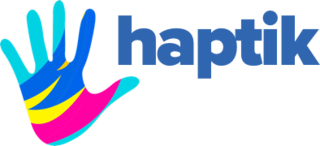
AIM was an instant messaging and presence computer program created by AOL, which used the proprietary OSCAR instant messaging protocol and the TOC protocol to allow registered users to communicate in real time.
ICQ New is a cross-platform instant messaging (IM) and VoIP client. The name ICQ derives from the English phrase "I Seek You". Originally developed by the Israeli company Mirabilis in 1996, the client was bought by AOL in 1998, and then by Mail.Ru Group in 2010.

Instant messaging (IM) technology is a type of online chat allowing immediate transmission of messages over the Internet or another computer network. Messages are typically transmitted between two or more parties, when each user inputs text and triggers a transmission to the recipient(s), who are all connected on a common network. It differs from email in that conversations over instant messaging happen in real-time. Most modern IM applications use push technology and also add other features such as emojis, file transfer, chatbots, voice over IP, or video chat capabilities.

A chatbot is a software application or web interface that is designed to mimic human conversation through text or voice interactions. Modern chatbots are typically online and use generative artificial intelligence systems that are capable of maintaining a conversation with a user in natural language and simulating the way a human would behave as a conversational partner. Such chatbots often use deep learning and natural language processing, but simpler chatbots have existed for decades.
Interactive voice response (IVR) is a technology that allows telephone users to interact with a computer-operated telephone system through the use of voice and DTMF tones input with a keypad. In telephony, IVR allows customers to interact with a company's host system via a telephone keypad or by speech recognition, after which services can be inquired about through the IVR dialogue. IVR systems can respond with pre-recorded or dynamically generated audio to further direct users on how to proceed. IVR systems deployed in the network are sized to handle large call volumes and also used for outbound calling as IVR systems are more intelligent than many predictive dialer systems.

Yahoo! Messenger was an advertisement-supported instant messaging client and associated protocol provided by Yahoo!. Yahoo! Messenger was provided free of charge and could be downloaded and used with a generic "Yahoo ID" which also allowed access to other Yahoo! services, such as Yahoo! Mail. The service also offered VoIP, file transfers, webcam hosting, a text messaging service, and chat rooms in various categories.
An Internet bot, web robot, robot or simply bot, is a software application that runs automated tasks (scripts) on the Internet, usually with the intent to imitate human activity, such as messaging, on a large scale. An Internet bot plays the client role in a client–server model whereas the server role is usually played by web servers. Internet bots are able to perform simple and repetitive tasks much faster than a person could ever do. The most extensive use of bots is for web crawling, in which an automated script fetches, analyzes and files information from web servers. More than half of all web traffic is generated by bots.
A voice-user interface (VUI) enables spoken human interaction with computers, using speech recognition to understand spoken commands and answer questions, and typically text to speech to play a reply. A voice command device is a device controlled with a voice user interface.
In artificial intelligence, an embodied agent, also sometimes referred to as an interface agent, is an intelligent agent that interacts with the environment through a physical body within that environment. Agents that are represented graphically with a body, for example a human or a cartoon animal, are also called embodied agents, although they have only virtual, not physical, embodiment. A branch of artificial intelligence focuses on empowering such agents to interact autonomously with human beings and the environment. Mobile robots are one example of physically embodied agents; Ananova and Microsoft Agent are examples of graphically embodied agents. Embodied conversational agents are embodied agents that are capable of engaging in conversation with one another and with humans employing the same verbal and nonverbal means that humans do.

A dialogue system, or conversational agent (CA), is a computer system intended to converse with a human. Dialogue systems employed one or more of text, speech, graphics, haptics, gestures, and other modes for communication on both the input and output channel.
Voice portals are the voice equivalent of web portals, giving access to information through spoken commands and voice responses. Ideally a voice portal could be an access point for any type of information, services, or transactions found on the Internet. Common uses include movie time listings and stock trading. In telecommunications circles, voice portals may be referred to as interactive voice response (IVR) systems, but this term also includes DTMF services. With the emergence of conversational assistants such as Apple's Siri, Amazon Alexa, Google Assistant, Microsoft Cortana, and Samsung's Bixby, Voice Portals can now be accessed through mobile devices and Far Field voice smart speakers such as the Amazon Echo and Google Home.
Robert Hoffer is an American businessman who for the past 25 years has primarily worked in technology and software. He initially developed and launched one of the first online yellow pages. Hoffer is also credited with developing instant messaging agents, web-based scratch-off games, and several other now-commonplace technologies. Over the course of his career, he has worked for and consulted for many large corporations, including Apple Computer, AOL, Xerox, PepsiCo, Playboy, Citibank, and Lipton.
Colloquis, previously known as ActiveBuddy and Conversagent, was a company that created conversation-based interactive agents originally distributed via instant messaging platforms. The company had offices in New York, New York, and Sunnyvale, California.

eBuddy is a privately held Dutch software company that offers instant messaging services. As of 2011, eBuddy reported 100 million downloads. The company's flagship service is XMS, a proprietary cross-platform instant messaging service. After some changes of ownership, the company is now again owned by its original founders, Onno Bakker and Jan-Joost Rueb.

Windows Live Agents are chatterbot agents for Windows Live Messenger that is part of Microsoft's Windows Live services. They provide users the ability to interact with the agents through Windows Live Messenger to get more information about specific topics.

A virtual assistant (VA) is a software agent that can perform a range of tasks or services for a user based on user input such as commands or questions, including verbal ones. Such technologies often incorporate chatbot capabilities to simulate human conversation, such as via online chat, to facilitate interaction with their users. The interaction may be via text, graphical interface, or voice - as some virtual assistants are able to interpret human speech and respond via synthesized voices.
Kik Messenger, commonly called Kik, is a freeware instant messaging mobile app from the Canadian company Kik Interactive, available on iOS and Android operating systems.
Gupshup is an American messaging platform for businesses to communicate in. With primary operations in India, United States, Europe, Latin America, Africa, Middle East and South East Asia, it is owned and operated by Webaroo Inc.

Haptik is an Indian enterprise conversational AI platform founded in August 2013, and acquired by Reliance Industries Limited in 2019. The company develops technology to enable enterprises to build conversational AI systems that allow users to converse with applications and electronic devices in free-format, natural language, using speech or text. The company has been accorded numerous accolades including the Frost & Sullivan Award, NASSCOM's Al Game Changer Award, and serves Fortune 500 brands globally in industries such as financial, insurance, healthcare, technology and communications.
A conversational user interface (CUI) is a user interface for computers that emulates a conversation with a real human. Historically, computers have relied on text-based user interfaces and graphical user interfaces (GUIs) to translate the user's desired action into commands the computer understands. While an effective mechanism of completing computing actions, there is a learning curve for the user associated with GUI. Instead, CUIs provide opportunity for the user to communicate with the computer in their natural language rather than in a syntax specific commands.







